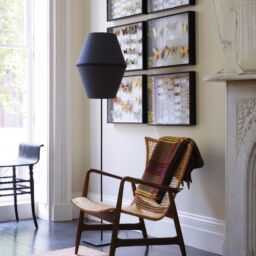A lot has been said about sustainable lifestyle and green homes. The beauty of this concept is that it can be applied to any space. While the scope for incorporating green interiors is higher in structures that are under construction, there is a lot that you can do to convert your existing home into a green space. There are no fixed patterns for green interiors because the design needs to be customized depending on the local climatic and environmental conditions. Analyze the aspects of your space because green homes optimize on natural energies, with sunlight and wind direction being the two major considerations.
You can begin by opening up spaces which allow sunrays into the house during the first trimester of the day. These rays are said to have healing effects and are not strong enough to heat up the space. Avoid harsh rays that stream in at noon and post noon because these rays are strong and hot. You can put up drapes or provide an external attachment which can prevent the harsh rays from entering the home. Dual pane windows work very effectively to keep heat out while allowing light to stream indoors.
Green interiors promote circulation of wind and cross ventilation. Unfortunately, wind does not flow in the same direction all through the year. However, in India, wind mostly blows from the southwest or northeast direction. So, if you can provide cross ventilation in the southwest-northeast aspect, you can enjoy natural breeze almost all through the year.
Interior design accessories such as water fountains and greenery can play a major role in keeping the interior temperature balanced. The sound of gently cascading water is very soothing as well. Air circulating in the room is cooled by the water and so, the room temperature remains low. Indoor plants control interior humidity and reduce concentration of toxic chemicals in the interior air. Plants also reduce airborne dust particles. So, your interior is cleaner, cooler and fresher.
In addition, you can change the electronics of your home and bring in new energy rated equipments. Follow up with installation of solar panels for backup power, heaters, geysers and water purifiers. Install LED lights with dimmers because they consume very little energy. Do away with toxic paints. Set up low flow toilets. If you are going in for a major renovation, you can change the floor to make it eco-friendly by using natural elements. Make arrangements for rainwater harvesting. Recycle organic garbage and use as manure for your plants. Stop using non degradable things such as plastics.
Green homes are subject to creative use of available space, combined with strong knowledge about energy and temperature factors. The options that you have are many. So, it all comes down to how much you are prepared to invest in your new home interior. The process might cost you a bit, but when you consider the overall cost savings which you can enjoy on your energy and medical bills, the initial investment definitely seems worth the expense.

